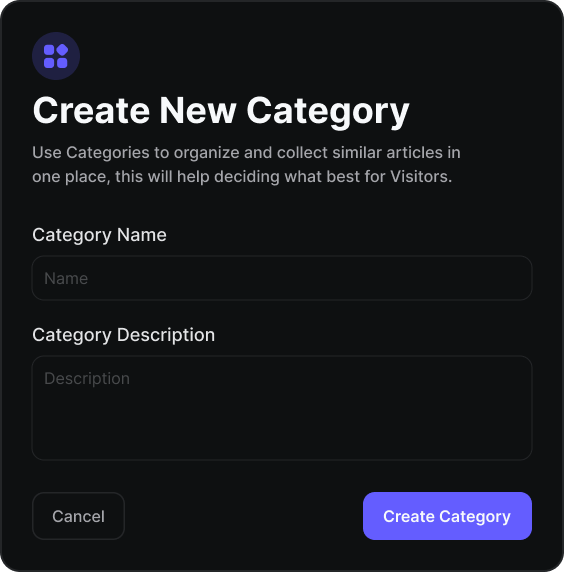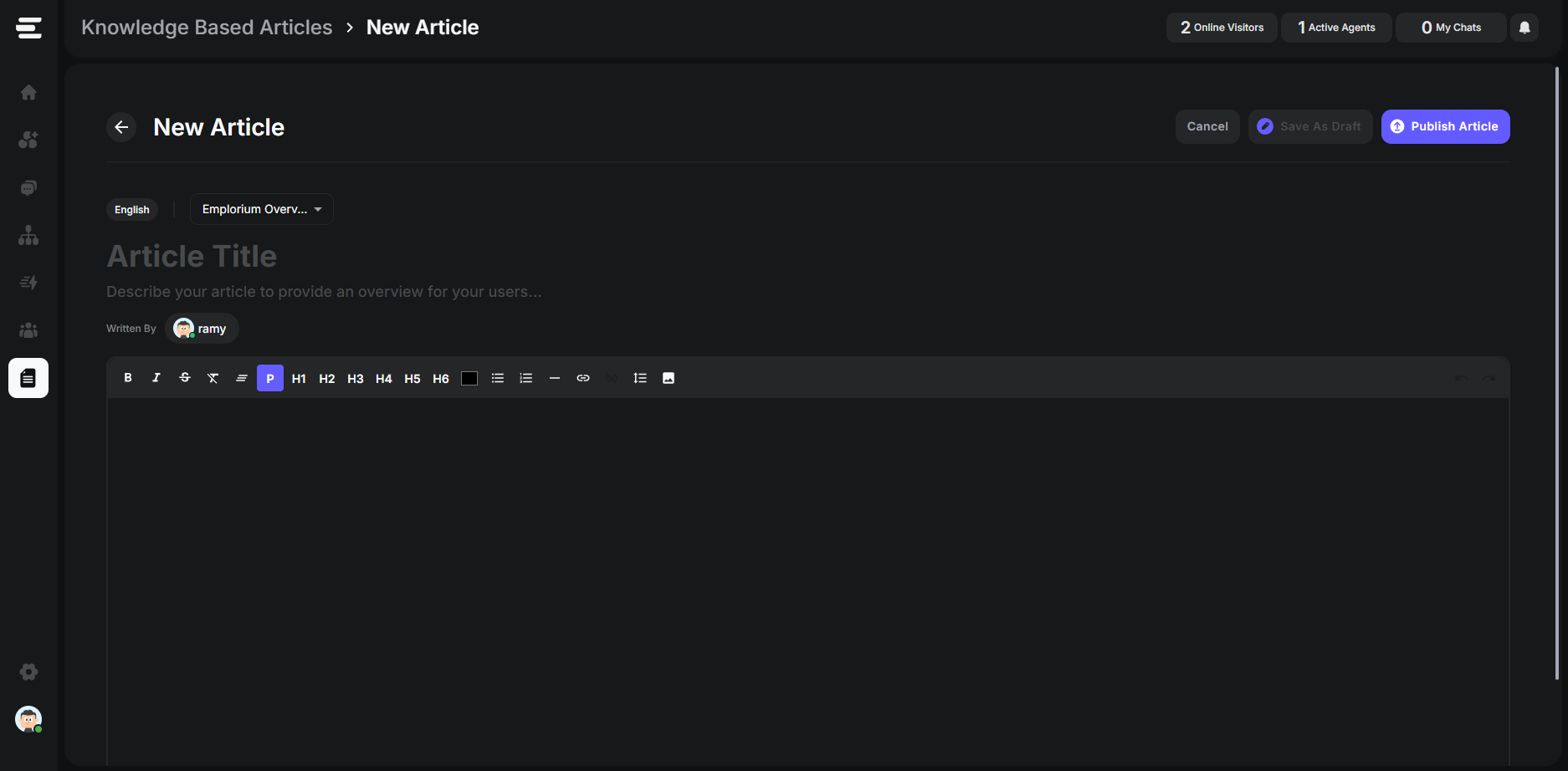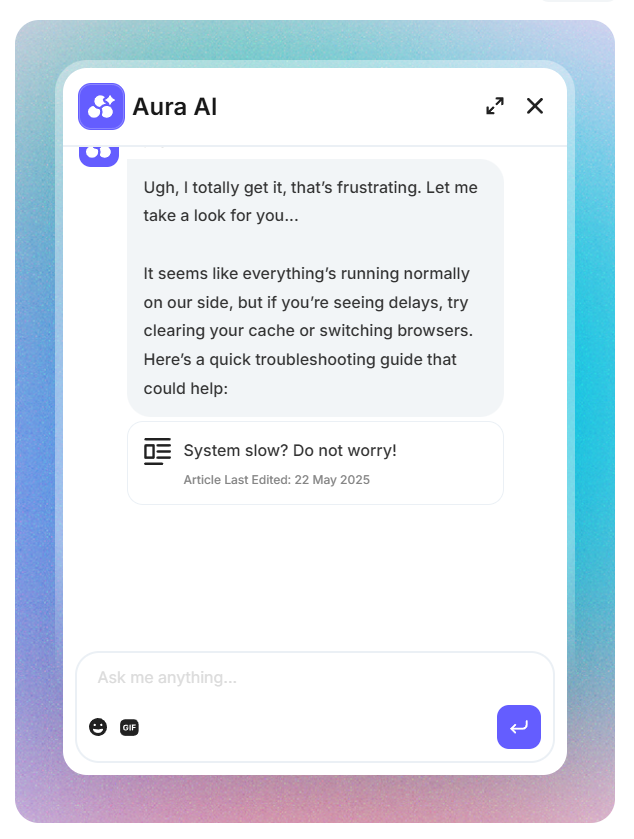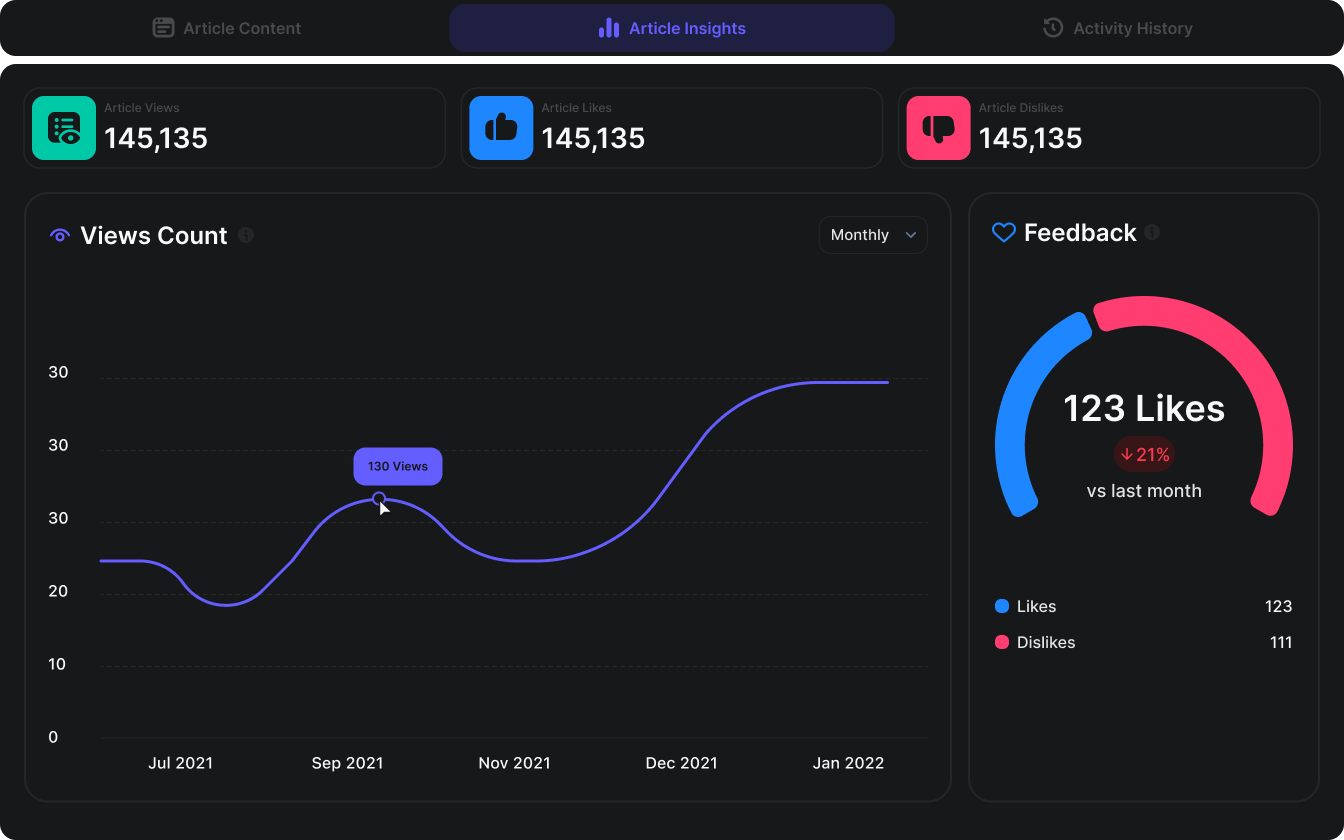What are Emplorium Knowledge Base Articles (KBAs)?
KBAs are your centralized repository of information about your product, services, and common questions. They are designed to be easily accessible by your customers through the chat widget and are automatically utilized by Aura AI to answer queries.Creating & Managing KBAs
Emplorium provides an intuitive interface for creating and organizing your knowledge content.1. Structuring Your Knowledge Base
KBAs are organized into Categories for easy navigation and management.1
Create Categories
Before writing articles, create logical categories to group related content. Examples include “Getting Started,” “Troubleshooting,” “Billing,” or “Features.”Navigation: 
KBA > Categories tab > Add New Category
2
Add New Article
Once categories are set up, you can start creating individual articles.
- Title & Content: Provide a clear, concise title and rich-formatted content for your article.
- Category Assignment: Assign the article to one or more relevant categories.
- Publishing Status: Set the article as
DraftorPublished. OnlyPublishedarticles are visible to customers and can be used by Aura AI.
KBA > Articles tab > Add New Article2. Rich Content Formatting
Emplorium’s KBA editor supports rich formatting to make your articles clear and easy to read.- Text Formatting: Bold, italic, underline, strikethrough.
- Headings: H1, H2, H3 for clear sectioning.
- Lists: Unordered and numbered lists.
- Blockquotes: For highlighting important text.
- Media: Embed images directly into your articles.
- Links: Add hyperlinks to external resources or other KBAs.

How KBAs Empower Your Business
KBAs serve multiple critical functions within the Emplorium platform, benefiting both your customers and your team.1. Customer Self-Service (via Chat Widget)
Your published KBAs are directly accessible to visitors through the Emplorium Chat Widget, enabling them to find answers independently.- Dedicated Articles Page: The widget has an “Articles” page where users can browse articles by category, search for specific topics, and even rate articles as “Helpful” or “Not Helpful.” <br/> #include_picture_of_widget_articles_page
- Reduced Support Volume: By empowering self-service, you significantly reduce the number of common questions reaching your support agents.
2. Fueling Aura AI’s Knowledge
KBAs are a primary source of information for your Aura AI agent, allowing it to provide intelligent and contextual responses.- Contextual Replies: Aura can parse the content of your KBAs and use this information to answer visitor questions directly, even if the exact phrasing isn’t in your Q&A pairs.
- KBA Suggestions for Agents: Within the Inbox, agents have a “KBA Suggestions” tab in the right panel. This lists relevant public articles based on the current conversation, allowing agents to quickly reference or
Suggest Articledirectly to the visitor. <br/> #include_picture_of_kba_suggestions_in_inbox

Note: You must give Aura access to this article via Aura Knowledge Page!
3. Internal Team Reference
KBAs also serve as a centralized, consistent knowledge base for your internal support team, ensuring everyone provides accurate information.Monitoring KBA Performance (Analytics)
Emplorium provides quick analytics for your KBAs to help you understand their effectiveness:- Views: Track how often each article is viewed by customers.
- Likes/Dislikes: See how users rate the helpfulness of your articles. This feedback is crucial for identifying areas for improvement.

Best Practices for a Powerful Knowledge Base
1
Keep Articles Concise & Focused
Each article should address a single topic or answer a specific question. Break down complex subjects into smaller, digestible pieces.
2
Use Clear & Simple Language
Avoid jargon. Write in a way that your average customer can easily understand.
3
Utilize Formatting Effectively
Use headings, lists, bold text, and images to break up content and improve readability.
4
Prioritize Based on FAQs
Start by creating articles for your most frequently asked questions and common support issues. This will have the biggest impact on reducing support volume.
5
Regularly Update Content
Products and policies change. Review your KBAs regularly to ensure accuracy and relevance. Archive outdated articles.
6
Monitor Analytics & Feedback
Pay attention to article views and helpfulness ratings. Articles with high views and low helpfulness might need to be rewritten or expanded.
7
Encourage Agent Contribution
Your support agents are on the front lines and know what customers are asking. Encourage them to contribute to the KBA or flag gaps in content.
Next Steps
- Optimize Aura AI’s Knowledge Sources - Ensure your KBAs are properly linked for Aura’s training.
- Customize Your Chat Widget - Control whether your Articles page is visible to visitors in the widget.
- Review Dashboard Overview - See how KBA views contribute to overall engagement metrics.

